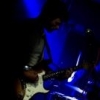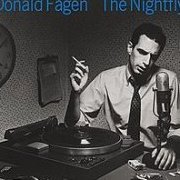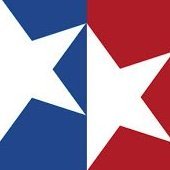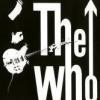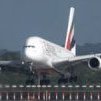Search the Community
Showing results for tags 'revell'.
-
Leopard 2A6M+ (03342) 1:35 Carrera Revell The Leopard 2 is the successor to the earlier Leopard Main Battle Tank (MBT), and was developed in the 70s, entering service just before the turn of the decade. The initial design had a vertical faced turret front, while later editions had improved angled armour applied to the turret front that gives the tank a more aggressive look and provides much better protection from an increased likelihood of deflecting incoming rounds away. It has all the technical features of a modern MBT, including stabilised main gun for firing on the move, thermal imaging, and advanced composite armour, making it a world-class contender as one of the best tanks on the market. The original Leopard 2 variant entered service in 1979, but has been through several upgrades through its service life and the current production variant is the highly advanced 2A7+, with the 2A8 waiting in the wings. The 2A6 is still a powerful battlefield resource however, and likely to be so for some considerable time. It sports the Rheinmetall 120mm smoothbore gun with the barrel extended over the A5, which results in a higher muzzle velocity that improves its penetration power over its predecessor, allowing it to reach targets at a greater range and hit harder. It also has an armoured ammunition storage space in the turret that is engineered to blow outward in the event of a detonation of munitions, which again improves the crew survivability further. For close-in defence they are fitted with an MG3 machine gun, and the armour is installed to give it an arrow-head front profile to the turret, as well as several more subtle upgrades that follow on from the 2A5. Sales of the Leopard 2 have been good overseas because of its reputation, and Canada, Turkey, Spain and many Nordic countries use it as well as many other smaller operators. The 2A6M is a mine-protected variant for use in asymmetric combat and in the likelihood that IEDs or mines have been planted to destroy the heavy armour before it can roll over their lightly protected positions. These were upgraded in the mid-2010s to the 2A7 standard, but due to monetary constraints only fifty vehicles were converted, only using the + designation until the completion of the programme in 2017. The upgrades involved new comms systems that include a field telephone on the rear bulkhead, replacement of the potentially dangerous Halon fire extinguishing system with a more environmentally friendly chemical system, as well as new sights for the commander and gunner, bringing them up to modern standards. The Kit This is a new boxing of Revell's 2012 tooling of this type, as evidenced by the raised copyright lettering on the inside of the floor pan. It arrives in an end-opening box, with a painting of the Leopard wearing European camouflage while another big cat, the Eurocopter Tiger flies behind it. Inside are eight sprues in grey styrene, in a welcome move away from the green Revell used to use in their AFV kits. There are also four sprues of flexible black plastic, plus four runs of track in the same material, and a clear sheet of acetate (not pictured – it’s invisible) that is marked as "window sheet" on the instructions. A short length of wire (not pictured) is taped to the instruction booklet, and the ends are quite sharp, so avoid stabbing yourself like I once did some years back. The decal sheet is hidden away in the centre of the booklet, and is protected by a sheet of thin greaseproof paper, as is the clear acetate. The kit is clearly a modern heritage, and has some nice detail on the outer hull, including patches of anti-slip coating on the main surfaces. The large circular cooling fans on the rear decking are particularly nicely done as separate parts, and should look well once painted. The odd splitting of the track could cause some issues however, as each track is made up from two halves that must be glued together before they can be fitted to the tank, but won’t react to normal styrene glue, so would be best done with super glue or epoxy glue, which would require the joint to remain relatively straight, so positioning them in the middle of the top and bottom track runs would be beneficial. Construction begins with the hull, which is built up from separate sides, held in alignment by two perforated bulkheads that sit in slots in the floor plan. An insert is added to the right rear side, completing the lower hull by fixing the rear bulkhead in place. The upper hull is mated with the lower, fitting a hatch on the right side, and one of the two circular cooling vents on the engine deck. Suspension details such as bump-stops, swing-arms with stub axles detail the hull sides, after which seven road wheel pairs are slipped over the axles on each side, and four return rollers per side. The idler wheels are smaller than the road wheels, and the drive sprockets are built from two separate toothed parts each. An appliqué armour panel is added to the underside of the tank, which improves its mine resistance, although unusually it doesn’t have an angled keel to deflect the blast like most other anti-mine packages. As mentioned earlier, the tracks are of the rubber-band type with nice detail, and if you can live with the curving of the links around the drive sprockets and idler wheels they should suffice. Each length is made from two sections, which have a generous four-link overlap and two pins on each link to strengthen the join. You are instructed to glue them with ordinary plastic adhesive, and you are recommended to clamp them together and wait until they are properly cured before handling them, but you’ll be in for a long wait, as I tested liquid glue and it had no melting effect. The pins are flush to the track pads on the outer face, so filling or hiding them under the fenders and against the ground would be advisable once you have attached them to the vehicle. The rear bulkhead of the vehicle has a large radiator grille running along the full width, which is a little shallow, but with some black paint in the recesses, should suffice for most modellers. A couple of turnbuckles are glued to the lower edge, and under the ends hang the two flexible mudguards that are made from the same plastic as the tracks, and the field telephone box with handle in the centre. Two other panels are fixed to either side, one with a bracket that receives the convoy light shield, applying a decal or painting the white cross by hand if you prefer. Three towing shackles and the rear light clusters finish the rear of the vehicle for now, installing the flexible towing cables with styrene eyes later. A set of pioneer tools are added to the rear deck, gluing barrel cleaning rods to the front deck, and the afore-mentioned towing ropes are fitted. If you're not happy with a mould-line running down your tow-ropes, now would be the time to replace it with some braided wire or cord, using the kit parts as a length template. Moving to the glacis plate, spare track links on a palette with the front hazard lights are installed, along with the usual shackles and headlights, followed by the driver’s hatch, which has detail inserts fixed front and rear. The fenders are integral to the top hull, and only the side-skirts need to be added. These are made from two basic parts on each side with tapering forward sections, and overlaying thicker appliqué armour over the front two road wheel stations and idler, plus the rear sections that locate on a long guiding tab moulded into the back of the parts. The turret is a complex shape, and the base is made up from three parts, onto which the main gun is built up with a block in place of the breech. The barrel is supplied in two halves, split vertically lengthwise, and it has some nice moulded-in detail, so take care aligning the parts and again when cleaning up the seam. The barrel is tipped with a hollow muzzle, but this is a little shallow, so might be better drilled out once the glue is dry. The mantlet section that raises with the gun is built up around the base of the barrel in three parts, and this is then added to the lower turret, being locked in place by a pair of trunnions that permit the barrel to raise and lower. The top of the turret is a large part with only one two-layer panel in the rear right added along with the sighting system's lenses that are installed from inside. This is mated to the bottom of the turret, after which the side panels and bustle are added to complete the main part of the turret's construction. The angled panels that bolster the armour of the turret's arrow-head front are installed next, and here there are were some quite significant sink-marks in previous boxings that seem to have been almost totally eradicated in this boxing. A bustle stowage box is created from a four-sided part with separate roof, glued to the rear of the turret, then the roof of the turret is festooned with various small parts, including antenna bases, armoured surrounds over the vision blocks, the new sight in front of the commander’s cupola, which utilises two parts cut from the clear sheet for its lenses front and rear. Another sighting turret is installed behind and to the left of the commander’s cupola, and the TV sensor box at the front is outfitted with its doors, which you can pose open by cutting the part in half and gluing it to the outer edges of the box. Lifting eyes and two crew access hatches are made and installed in open or closed positions, fixing the gunner's MG3 to the edge of his hatch. Triangular mesh baskets are made from four parts each and installed on the angled rear corners of the bustle, and these styrene parts would be prime candidates for replacement by aftermarket mesh to give a more realistic appearance. The smoke grenade launchers are fitted to each side of the turret just forward of the baskets, and these are made up from individual barrels attached to a rail with supports moulded in. To create the aerials, the instructions tell you to cut and heat up one end of two 75mm lengths of wire before plunging them into the aerial mounts that were added earlier in the build. Whether super-glue would be a less hazardous option is up to you. Just be careful you don't stab or burn yourself at any stage. It hurts. The turret can then be added to the hull by twisting it into place to lock the bayonet lugs under the turret-ring flange. A pair of rear-view mirrors are added to the front of the tank, and the last part of the build is to decide whether to lock the barrel to the rear for transport, or leave it free with the transport-lock stowed between the two large fan grilles, one of which has been left off until this point, possibly to ensure that the base of the travel-lock that is moulded into the grille is correctly lined up. Markings There are two decal options included on the sheet, both of which are painted in NATO green, brown and black camouflage. You can build one of the following from the box: PzBtl 104, Pfreimd, 2018 PzBtl 414, Bergen-Lohheide, 2019 Decals are by Cartograf, which is a guarantee of good registration, sharpness and colour density, with a thin matt carrier film cut close to the printed areas. Conclusion The Leopard 2 is an impressive and capable tank, and this kit should build up into a good rendition of it with a little care and attention to detail. Whether you want to replace the tracks or not depends on your priorities and budget, but the flexible tracks included are well-detailed for their type. Highly recommended. Carrera Revell model kits are available from all good toy and model retailers. For further information visit or
-
Leopard 1 A1A1-A1A4 (05656) 1:35 Carrera Revell The Leopard Main Battle Tank (MBT) was designed in the mid-50s as an answer to a requirement by the newly reformed German Army to replace the outmoded American cast-off M47 and M48 tanks they had been using up until that point. It was based upon the premise that manoeuvrability and armament were more important than armour, as the rise of the HEAT round had rendered most standard rolled steel armour ineffective due to its massively increased penetrating capability. To make for a more agile target, the Leopard was designed to withstand 20mm rounds from all directions, weighing in at 30 tonnes, and with Nuclear, Biological, Chemical (NBC) protection to counter the Soviet hordes that they expected to be flooding across the border. Three design teams competed for the Tank contract from Porsche, Rheinmetall and Borgward. The Porsche prototype was eventually selected as the winner. Production was set up with Krauss-Maffei in Munich and deliveries began in late 1965. Provision was also made for bolt on Lexan armour, and it could carry the 120mm gun of the Leopard 2, even though this was never used. Export sales followed, and the Leopard 1 would go on to serve with the Armies of Belgium, Holland, Norway, Italy, Denmark, Australia, Canada, and Turkey. The A5 with Germany, Holland and Chile. The initial A1 variant reached service in the mid-60s carrying a NATO standard 105mm gun, then in the 1980s research was begun with a view to upgrading the tank, improving the turret to store more ammunition, and a more advanced fire control system was fitted to increase accuracy. An important upgrade to the A1A1 standard formed the basis of the A5 in the 80s, which with the benefit of retro-fitting, became the de facto standard Leopard 1 up until its replacement by the Leopard 2 in Bundeswehr service early in the new millennium. The Kit This is a new boxing of the 2015 tooling from Revell, as evidenced by the raised copyright details on the underside of the engine deck. It is a multi-version boxing, and arrives in a substantially oversized box as a gift-set, with enough room for another kit inside despite the extras, which seems a little wasteful of shipping space in our modern cost-conscious age. Inside the large top-opening box are ten sprues in grey styrene, a sprue and two track lengths in black flexible plastic, a 15cm length of metal wire (not pictured) taped to the colour instruction booklet, decal sheet, and profiles on the rear of the instructions for the four decal options that are included in this issue. The afore mentioned extras include six thumb pots of acrylic paint, a #2 paint brush, a 12.5ml bottle of Revell Contacta Professional cement with a needle applicator, and an A3 poster of the box art without all the frippery necessary for the packaging. It’s hard to photograph well, and there’s a thumbnail of it on the box top in case you can’t picture it. Detail is good, and it shows up better in grey styrene rather than the older green styrene Revell used to use, which was not only difficult to photograph well, but made it difficult to see too, as well as appearing a little old-fashioned. It’s an exterior kit, and offers the option to build the major variants, with traditional ‘rubber-band’ tracks that might deter some, and attract others. The cast texture on the mantlet and other parts is good, as is the Lexan armour that is applied to the turret sides, which has a fine waffle texture moulded-in, plus attachment bolts in recesses. Construction begins predictably with the lower hull, starting with the floor and adding the sidewalls that are supported by a bulkhead that slots into two grooves at around mid-way. The rear bulkhead is next, pointing out the detail painting of the moulded-in rear light clusters using letter codes that correspond to a table at the front of the booklet in Revell colour codes. Suspension details are added on both sides of the hull, including bump-stops, shock absorbers for the rear axles, and swing arms for all stations, locking in place on a keyed peg. The road wheels are made in pairs, fourteen road wheel assemblies, two idlers, plus four return-rollers on mounts higher on the hull sides. The road wheel pairs are slid onto the axles in groups of seven per side, plus the idler wheels at the front of the hull, then the drive sprockets are made from three layers ready to be fitted onto the hull with the tracks. Being of the rubber-band type, their ends are joined by threading the turrets at one end of the run through corresponding holes in the other end, then melting them flat into rivet-shapes with a hot screwdriver or similar item, turning them in a continuous band. One end of the loop is wrapped around the idler wheel, inserting the drive sprocket in the opposite end, and pushing the lengths over the road wheels, and gluing the sprocket into position at the rear. The upper hull is prepared by drilling out flashed-over holes in the front, three on the glacis plate, and two on each side ‘cheeks’ over the fender. While the part is inverted, the vision blocks for the driver are painted and pushed into their recesses in the forward deck, detail painting sensors over the fenders, and some filler caps on the engine deck. Detail inserts are applied to the sides of the hull once the two halves are mated, drilling a hole in each one before applying glue. Another small insert is fitted on the left side around the turret ring, then you have a choice of three styles of cooling grilles on the rear hull sides depending on which variant you are building, and for the A1A1 or A1A2 there is a tie-down at the rear that should be removed for some vehicles. The side skirts are fixed to the hull sides on small pegs, adding mudguards at the rear before the installation of detail parts begins, fitting lifting eyes, stowage boxes and pioneer tools on almost every surface. The rear bulkhead is adorned with towing eyes, shackles and a convoy shield light with cross decal, plus spare track links, and an equipment box on the top left. The towing cables are moulded in the same flexible black styrene as the tracks, and whether you use them is up to you, as you have separate styrene eyes for each end, so replacing them with cord or braided wire would be a simple task. The instructions show where they should be fitted, and their location as they snake toward the front of the vehicle, with arrows showing where the various tie-downs should be. More parts are added to the glacis, including light clusters, triangular blocks between the fenders and glacis, and a rack of cold-weather track grousers in three rows that mount on three pins. The driver’s hatch can be fitted opened or closed, although a figure would be needed to hide the empty interior, the location of the open hatch shown in a scrap diagram nearby. The turret upper begins as a hollow part, adding three vision blocks to the roof, then building the gun pivot from a hollow rectangle with pegs at each end, held in place by two trunnions in the lower turret. The vision blocks around the commander’s cupola are painted in, then the two halves of the turret are mated, adding detail parts and sensors on either side of the main gun on cylindrical projections, with open or closed covers possible using the same parts. The commander’s cupola and the gunner/loader’s hatches have top rails fitted, and a periscope is installed in front of the commander’s hatch. The gun barrel is provided in two vertically split halves, and has the cooling jacket and its straps moulded-in, inserting the keyed rear into the mantlet after drilling out several holes from within depending on which variant you are portraying. The completed assembly is glued to the box-shaped pivot to complete the basic structure, then additional details are layered over it in the next several steps, starting with a bustle stowage box with cylindrical tubes to each side, which is fitted to the rear of the turret, and covered with a back panel and tubular framed basket on each side, taking care to locate the ends to align the assemblies correctly. The crew hatches are both circular and made from two spaced layers, adding a central boss inside, both of which can be posed open or closed in their respective hatches, as per the accompanying diagrams on the following page. A canvas mantlet cover is fitted to the space at the front of the turret, adding lifting eyes to the top surface, then two racks of smoke grenade launchers on curved rails are made, glued to the turret sides, and surrounded by Lexan armour panels that cover the majority of the sides, adding two more panels to the bustle baskets, and a piece of appliqué armour to the mantlet with its own lifting eye. Various rails are added over the armour on the sides, and the gunner’s MG3 machine gun is fitted to a two-part pintle-mount, inserting the peg into the ring around his hatch, and aerial bases into a sockets near the rear of the turret roof. An TV camera is made from three parts and attached to the top of the mantlet for the A1A2 and A1A4 variants, mounting a three-part cage with a protective door to the front, while all variants have an Infrared night vision system in a box with the hatch posed open or closed, the open option involving cutting the hatch down the centre. It is mounted on the left side of the mantlet with a short frame supporting the front, and a thick cable leading back and into the turret at the corner. The completed turret is then lowered into the hull and twisted into position on a pair of bayonet lugs. The build isn’t quite over however, as there is a two-part travel lock applied to the rear bulkhead, which can be posed lowered for action or vertically to clasp the barrel while the turret is reversed for travel. The final two styrene parts are used to make the driver’s wing mirror that is mounted on the right fender at an angle, using a long or short support. You’ve probably forgotten about the piece of wire taped to the front of the instructions, but it has a use. Aerials of two lengths are cut depending on the variant, their ends warmed in a flame until they’re hot enough to melt plastic. Then they are inserted into the aerial bases, although I’d rather use super glue in case the plastic melts too freely. I have used wire and carbon rod for AFV aerials in the past, and would entreat you to be very careful when looking closely at your model, as the end is very sharp. If you’re clumsy like me, perhaps a dot of super glue forming a ball on the end could save your eyesight. Markings There are four decal options on the small sheet, but there are additional digits for number plates that permit you to build your own vehicle registrations. From the box you can build one of the following: Leopard 1 A1A1 (4. Baulos) PzBtl 24, Braunschweig 1977 Leopard 1 A1A2 (3. Baulos) JgBtl 511, Flensburg, 1988 Leopard 1 A1A3 (2. Baulos) PzBtl 354, Hammelburg, 1987 Leopard 1 A1A4 (2. Baulos) PzBtl 324, Hammelburg, 1987 Decals are by Cartograf, which is a guarantee of good registration, sharpness and colour density, with a thin matt carrier film cut close to the printed areas. Conclusion It’s a well-detailed exterior model of this important Cold War warrior, and while the flexible tracks may put off a few, it’s swings and roundabouts. There are plenty of variant options, and tons of number plate choices that should allow you to build a good replica of the first Leopard. Highly recommended. Carrera Revell model kits are available from all good toy and model retailers. For further information visit or
-
With the Jet provost done and the other activities out of the way, it’s time to get back in the saddle and do some more modelling. For a bit of a mojo boost, I watched Top Gun, Top Gun Maverick and The Final Countdown on DVD’s. So tonight, out came the Airfix F-14A Tomcat (blueprint box) and the Revell F-14D Super Tomcat from the stash - both 1/72. I’m going to try to build them both together stage by stage (rather than build one and then the other). The Revell is better in detail as it’s a much later kit, but the Airfix one still has a certain charm to it - even with the raised panel lines which I’ve decided to leave to see how it turns out. So, the first stage was to build the two cockpit tubs. The Airfix one is much longer then the Revell and both have raised detailing in the some consoles in roughly the same depth. The ejection seats are worlds apart in detail, so I might see if I can 3D print something a little more interesting for the Airfix kit. Otherwise the offices are fairly well detailed considering….. Both tubs were painted with Tamiya XF-19 Light Grey (as it’s what I had to hand) and are drying off. They will both receive other colours to highlight the consoles and IP’s. I’ve also bought an extra set of Airfix F-14A decals which offers two options - TopHatters and the Black Aces - to go with the Bounty Hunter and Grim Reaper options for the kits.
- 44 replies
-
- 12
-

-
Having just started one build in the WWII Twins GB, why not start another one here? I'll be building a Luftwaffe-operated F-104G 23+92, construction number 683D-8102, in the colors of JaboG 34, out of this Revell kit (currently OOB, no extras.) According to 916-Starfighter.de this plane had its first flight on May 30, 1963 so it should be good to go. /Jari
- 28 replies
-
- 12
-

-
The Northrop F-89 Scorpion is an all weather twin-engined interceptor designed and produced by the American aircraft manufacturer Northrop. It was the first jet powered aircraft to be designed for the Interceptor role from the outset to enter service,as well as the first combat aircraft to be armed with air-to-air nuclear weapons in the form of the unguided Genie rocket. First flew in 1948 and entered service in 1950. For this GB, I plan to build Revell’s 1/72 F-89D/J kit. I will be finishing it as the aircraft shown on the boxart, a F-89D from 61st Fighter Interceptor Squadron from Ernest Harmon AFB, New Foundland, 1957. Why this one? I like the look of the aircraft with the large wingtip rocket pods (containing a 104 ‘mighty mouse’ FFAR rockets) and more importantly it has a big smiley face on it.
- 38 replies
-
- 20
-

-
Hi all, with my second build about to be wrapped up and a few weeks before the Baby Boomers GB starts I thought why not fit another kit in here whilst I'm on a hot streak. So I picked up the Revell rebox of Hasegawa's Hs 129 in 1/48. The main pull for me was the kit features decals for a Panzerknacker based in Libya and I'm yet to do a North African campaign luftwaffe build. Specifically this Henschel captured at Castel Benito airfield. Looking forward to it, thanks for looking in!
- 18 replies
-
- 10
-

-

Carrera Revell BMW Z8 - 007 The World is not Enough (05662) 1:24
Mike posted a topic in Vehicle Reviews
BMW Z8 - 007 The World is not Enough (05662) 1:24 Carrera Revell The Z8 was a short-lived two-seat roadster that was produced from 1998 to 2003, designed as an homage to the 1950s era 507, to which it bears a striking resemblance. It started as a concept, and by 1996 there were sightings of prototypes, then in 1997 it made its debut at the Tokyo Motor Show as the Z07 in a more flamboyant form, toned down to a more practical style by launch, at which time it sported a removable metal roof that had been designed with the car, rather than as an afterthought. It was not a cheap vehicle, but BMW took the unusual step of guaranteeing spares supplies for 50 years, in the hope that it would go on to become a modern classic, thereby encouraging the super-rich collectors into the market. The interior was designed by Scott Lempert, with the intention of keeping it clean and uncluttered by making the controls multi-functional, reducing the driver’s workload. With a power output of 400bhp, it could rocket to 100km/h in 4 seconds, thanks in part to its all-aluminium construction, which included the spaceframe that was custom formed at a separate plant before being hand-finished at BMW’s Munich factory, with a total of over 5,700 built before production ended in 2002. It was replaced by the Alpina Roadster V8, which was toned down from the seat-of-your-pants style of the Z8, even down to the leather chosen for the seats, suspension, and the ease of a 5-speed automatic transmission, which gave it the feel of a Grand Tourer. The Z8’s image was etched into the minds of the cinema-going public when it was used in the James Bond film The World is not Enough, starring Pierce Brosnan as the eponymous 007, where it tore around the countryside before being cut in half lengthwise by a helicopter with an underslung set of multiple cutting wheels that cleaved his ride in two and stopped its roll completely. The Kit The copyright on the kit is 2000, which was the first time it was seen on the shelves of a model shop, when the car was still new, as was the film. This boxing arrives in a medium depth end-opening box, and inside are two sprues and a bodyshell in Revell’s usual light grey styrene, a sprue of chromed parts, a clear sprue, a bag of flexible black tyres, decal sheet and the instruction booklet that is printed in colour and has the decal profiles on the rear cover. Detail is good, and this is the only game in town at this scale. It is a kerbside model, with no engine, moulded-in doors, bonnet and boot panels that make for an easier build, while the alloy wheels and the underside are well detailed however, as is the dash and interior. As this is a special edition boxing related to the 007 film The World is not Enough, it also includes a set of six thumb-pots of acrylic paint, a #2 paint brush and a 12.5ml bottle of Revell’s Contacta Professional plastic cement, plus a folded A3 poster of the box art without the additional adornments necessary for the packaging, which is a little large and difficult to photograph, but a thumbnail of it can be seen on the box photo above. Construction begins with the two seats, which are moulded as individual units with separate back inserts that extends up to the headrest and side supports for the back cushions. The dash is a well-detailed moulding to which the steering column and chromed steering wheel are installed, with decals for the centrally mounted instrument binnacle and a choice of central bosses on the steering wheel. The door cards are fitted with grab-handles and are detail painted to match the rest of the interior, carrying that over to the cabin before applying six more decals to represent the smaller details. Foot pedals, gear shifter, handbrake and roll-over bars behind the head of each seat are installed, then the seats and dash are fitted into position, to be set aside while the rest of the underside is made. The wheels are first of the underpinnings to be built, each in pairs due to the size difference between the front and rear wheels. The tyres are moulded in a flexible black material, and have their centres filled with material out of the box, which must be cut away with a new #11 blade before you can install the two sides of the hubs, with the combined disc rotor and calliper acting as the pivot around which the wheel will rotate. The rear of the hub is blank, and should be painted the blackest black you possess, slipping it into the rear opening of the tyre, and slotting the rotor in through the hole. The front hub is well-moulded with five pairs of spokes, five studs in the centre, and a BMW logo decal applied to the centre. This might sound like a compromise, so I put a wheel together to test whether it would work, painting the interior ‘Black 4.0’ from Stuart Semple, and using his ‘Mirror’ for the brake disk. It looked good once it was put together, even though I didn’t bother with any preparation, primer or painting of the calliper. The rear axle is detail-painted and glued to a sub-frame along with two suspension mounts, dropping it into the rear of the floorpan, which is also detail-painted before the extensive twin-pipe exhaust system is laid over the underside, ending in custom-shaped back boxes. At the front, the steering arm is slipped through the suspension mechanism, trapping the suspension struts and stub-axles between the floorpan and the inner arches moulded into the interior. Staying at the front, but on the bodyshell, the front light reflectors are fitted from inside, moulded together by a carrier that keeps them in the correct orientation, installing the angled number plate holder under the grille, then following up with the clear lenses, and two chromed grille inserts that have circular fog lights embedded in the outer ends. The detail inserts in the front wings are also chromed, and are slipped into position from inside the bodyshell, then the clear windscreen is fixed on a pair of tabs in the front of the cab cut-out, adding a pair of windscreen wipers to the lower outer edge, and a combined rear view mirror and sun visor part is inserted into the top frame on a peg. The bodyshell is then lowered into position on four turrets, fitting the rear valance and two chromed exhaust pipes, one on either side after installation. The wing mirror housings are chromed, as are the mirror parts, one for each door, and a chromed door handle is inserted into the depression in each panel. The wheels are brought in and glued into position by applying glue sparingly to the centre disc part and avoiding the outer portion of the hub if you wish to rotate the wheels at any point. The final option is posing the roof up or down, with this boxing supplied with a cloth roof that can be shown stowed away by using a C-shaped styrene part at the rear of the cabin cut-out. The deployed hood is a single clear part with the integrated rear screen the only part that remains clear. The part that is intended to be the canvas hood is quite smooth, and would benefit from some stippling with glue or primer to give it a more fabric-like texture, and there are also a few ejector-pin marks on the inner face that you may want to deal with if you think they’ll be seen. Markings This is a special edition representing the movie car, so only one option is included in silver. From the box you can build the following: Decals are by Cartograf, which is a guarantee of good registration, sharpness and colour density, with a thin gloss carrier film cut close to the printed areas. Conclusion The Z8 was an attractive car with a significant claim to fame. This kit is a good kerbside model of the type, and if you can find a 1:24 3D printed Pierce Brosnan figure to put in the driver’s seat or stand next to it, you’ll have an interesting addition to your display cabinet. Highly recommended. Carrera Revell model kits are available from all good toy and model retailers. For further information visit or -
Hi, Here's my Revell F-84E with Aeromaster decals. That 86th FBW must have been quite a sight, I hope to reproduce a little of that magic. After years of looking for the F-84E and only seeing F-84G's, I finally found several last year at a modelling festival and from an estate sale. The one from the estate sale (a modeller named Jean-Claude of the Amay Models Club) had a bit of work done on it. He removed what looks like external reinforcement plates around the Main Landing Gear wells. I've circled the areas in red on the picture below. The shape of the ones in front of the wells reminded me a bit of the compressibility flaps on late P-38's and I noticed that there was a stencil with quite a bit of text on them. Stencils 40 and 41 on the Revell kit sheet. Fearing that the stencil might mean "stay away from this flap!" I looked at it with a magnifier. The stencil is about electrical plugs. I plan to use Jean-Claude's lower wings on this build as this will be the earliest F-84E that I'd want to build and thus the best one to do without external reinforcements. Cheers, Stefan.
- 12 replies
-
- 9
-

-
Hi guys, my first kit finished this year, and my first post here on Britmodeller. This is a Revell kit with some scratches to make it look more like the real thing. I will explain each of these changes better in the photos below. For the paint, I found a lot of paint schemes for these shelters, so I took one from reference and make only a few changes. The Kit: Revell 1/72 Shelter and ground plate I thought the dome was not very stable so as a first step I reinforced it. There were many ejection marks as well to cover. The shape of the kit is very far from the real thing, so I superimposed a photo of the piece in photoshop with the photo of the real shelter, printed it out and used it as a template to make a new facade with a 5mm sheet of styrene. The dome of the shelter is warped so it was necessary to hold it in shape with tape. I tried soaking it in hot water to get the right shape, but I wasn't successful. The solution I found was to put some nails in the base to hold the dome in the right shape. The kit is very poor in details, so I wanted to do some to make it more interesting. Scribbed some panel lines scratch those boxes added some wires and some interior stuff for the front lowering I used zipaline and kombifiller for the painting I made a mixture of paints to try to match the tone of the reference photos
-
After my last build took 2 years on and off, the heavily modified Airfix Wallace and Grommit motorbike and sidecar. I decided I needed to detox by building a kit in a day... The Airfix Mary Rose, which I did indeed finish in one day. After riding the high of actually finishing a complete kit in such little time, I felt my mojo has been somewhat restored for now and have embarked on my second kit in as many weeks. This was a gift from my wife on my latest birthday, she bought me this because I wouldn't let her have a real one to learn in, so have been tasked to build it to her specification. Hopefully this will take less than 2 years to build, so I am not going mad with the details to help with a fairly speedy completion. Cheers, Andy.
- 29 replies
-
- 11
-

-
My first kit finished this year, almost in time for the 50th anniversary of the first F-16 flight - 1:72 F-16AM Fighting Falcon, no 1615, serial 61-630, 53rd Fighter Squadron "Warhawks", Romanian Air Force, Borcea AB 2023. This is an ex-USAF 83-1077 and ex-Portuguese 15134 aircraft, delivered to Romania in 2021 after refurbishing and repainting. I chose this camo just because I simply like it very much. It's also nice to see an old plane with all this modern equipment. Revell kit, CMK resin cockpit, Master metal Pitot tube, AOA probes and static dischargers, Hasegawa missiles, Eduard Sniper ATP and some scratch. Painted with Mr. Hobby C series paints. Decals are from ModelMaker set. Thanks for watching!
- 17 replies
-
- 72
-

-

-
This is a placeholder for my next build in this GB. EDIT,now withdrawn, as this version was never actually built, which is news to me. See below ... I can confidently predict this will be a very straightforward build, just by looking at the plastic. This kit was originally released in 1994 as the reconnaissance version, followed by the night fighter in 1995. As far as I am aware, the reconnaissance version has never been released again, but the night fighter has been re-released several times, and will be again later in 2024. I bought this kit in 1996 for 9 Irish pounds. Original version. Note the the 3-bladed propellers and truncated spinners. Unlike the night fighter, this version did see limited service, over the Eastern Front and the UK. Contents: A closer look at the parts. The night fighter has longer span wings. I'm not sure why the fuselage is split fore and aft, but I'm sure there's a good reason. There's a cut-out in the lower rear of one of the nacelles, which in the reconnaissance version is fitted with a clear part, very likely a camera port. In this version, it's blanked off. The instructions don't say what side it's on, but studying the instructions for the reconnaissance version, it seems this is on the starboard side. The canopy framing is going to be very, very easy to paint, compared to the kits I'm currently working on: Finally, the radar aerials:
-
Hi All, My first completion of 2024 is Revell's mighty Halifax, which I chose to complete as NA242 of 192 Sqn RAF, based at RAF Foulsham in 1945. 192 Sqn were part of 100 Group, and these aircraft were fitted with various Electronic Warfare installations, including Mandrel. As well as the normal crew complement these aircraft also carried a pair of Special Operatives who were responsible for operating the equipment. The aircraft had completed 55 missions when this photo was taken, and survived the war. Here's a photo of NA242 (copyright Australian War Memorial - image for discussion only and will be removed on request: You may note that the aircraft carries some rather extensive nose-art, which I created using a combination of stencils and self-printed decals. Here's the WIP if anyone is interested: The kit was an absolute joy to build - the engineering and detail were superb, and I added an Eduard etch set along with a mask set and some lovely Freightdog wheels. You may or may not know that this kit is OOP, so I am very grateful to @tomprobert for agreeing to part with his kit and all the goodies. Thanks also to Nigel @T-21 who provided a wealth of detail on 100 Group Halifaxes which was most educational in details of the EW installation. Anyway, on with the pictures! Here's a pic during construction to show the interior detail: Here's a final shot with a double dose of mighty Bristol power: I have thoroughly enjoyed this build, and it's nice to finally have a Halibag in the collection. Thanks to all those who have offered kind words and encouragement along the way - it has been much appreciated! Thanks for looking, Roger
- 43 replies
-
- 100
-

-

-
My entry for the group build will be Revell's 1/48 F-84E, and as the title suggests, the markings I decided on are the colorful markings for Col. Robert Scott's thunderjet he flew when he took command of the 36th Fighter Bomber Wing in Furstenfeldbruck, Germany in 1951. Scott gained fame as the highest scoring ace of the CBI theater in WWII with 10 kills. As the commander of the brand new 23rd FG, he flew hand-me-down AVG P-40s adorned with leftover Flying Tiger decals, so when he was assigned F-84E-10-RE 49-2299 as his personal aircraft with the 36th FBW, he figured it appropriate to pay homage to his WWII days and applied several Flying Tiger motifs to the aircraft. Decals are from an excellent Cutting Edge sheet, although the national insignia and stenciling will need to come from elsewhere, likely a newer boxing of a Revell F-84G in the stash since the decals in the E box have started to yellow. The only AM I plan to add at the moment is a resin seat from Quickboost.
- 24 replies
-
- 13
-

-
Hello Britmodellers, Here's another Revell P-47M, reverse-engineered into a D-28-RA. Because all my Thunderbolts had red cowling fronts, I required one with a blue engine cowling. The "Thunderbolts over Germany in Color" documentary on YT was another inspiration. Thanks for looking! Luka
- 1 reply
-
- 28
-

-
- Thunderbolt
- 1/72
-
(and 1 more)
Tagged with:
-
Hi all, I seem to be making good time with my main GB build (1/32 Arado Ar 234) so I am risking all and putting in a second build in true WWEMD style The box is a bit beaten up but packed with goodies! Thanks go to Britmodeller @BushBrit66 for the kit and accessories. As this is a Revell rebox (it's the Dragon kit) all the sprues are packed together in one big bag. The build also includes the very nice Verlinden cockpit and engine set. Although it doesn't include a full engine, the exposed detail is very nice. And obviously the cockpit is completely overhauled. There's also a cornucopia of reference material which should make this a cinch. I rarely build in this scale so it all feels rather fine and little, so this will be a nice side-build I can keep busy with while struggling with the resin MDC Ar 234! Thanks for looking, Alan
- 27 replies
-
- 20
-

-

-
I'm pretty sure this is the right place for this RFI, so here goes. The Revell 1/72 V2 rocket box art.. Some of the photos were taken by my grand little helper, my 4 1/2 year old grandson, who was only too happy to inspect the rocket before the photo session to get a feel for the model; This last build of 2023 was finished a couple of days ago, when I realised as I was about to take some photos for the RFI I hadn't painted the wheel hubs of the launch platform "wheelbarrow" type thing and so did it on monday, circumstances conspiring a little to delay the RFI. I've painted the kit in a 1942 prototype scheme, the revell instructions rather cunningly only showing one quarter of the scheme, so despite looking in some books and on t'internet for more details, I kind of used some common sense and painted it in what seemed to me to be a symmetrical scheme. I confess that some of the touching up made me consider using the all over green scheme instead, but I perservered and the end result may look a little wavy, but maybe Hans or Joachim weren't overly concerned about dead straight lines back in the day, either. Anyone who's made this kit will know the rocket itself is a doddle to put together, the launch platform a little less so; I did have some moments with a few fiddly bits, but it went together in the end with a touch of superglue here and there. Paints used were Halfords appliance gloss white, tamiya and Mr Color (RLM 04). All in all, I think it's a reasonable way to finsh the year off, thanks for looking.
-
My first builds for this GB. These are both based on the old 1967 tooling, updated in 1982 to cover the P-70 night fighter. As I wanted to build both, and they have 90% commonality, it makes sense to have just the one build thread. I bought both of these kits in 1996 a few weeks apart, probably in different cities. Combined cost: < 10 Irish Pounds (c. 12.70 Euro in today's money). The P-70 is in a Matchbox box, which in those days was just another way of selling any mold owned by Revell. Because I dislike painting black on black plastic, I have swapped around most of the parts. The basic tooling includes the drill-out holes for the P-70 ventral gun pack, and for the dipole aerials on the port wing. There is one missing main undercarriage door (easy to replace), and one missing tiny oval side window (Clearfix to the rescue). I have nothing fancy planned for either kit. The bomber kit has the option to build a USAAF A-20C, but the SAAF Boston III was always my first choice.
- 45 replies
-
- 24
-

-
- Revell
- A-20 Boston
-
(and 1 more)
Tagged with:
-
Revell Chinook HC.Mk.1 1/48 Model kit by Jonathan Hughes, on Flickr Something of a departure from my normal builds, but one I’ve been promising to get done for a year or two for a friend who had the model sat under his desk in the office for about ten years and wondered if he’d ever find the courage (as a non-modeler) to tackle it; we’ve worked together for about twenty years, so I offered to build it for him. It will essentially be an out of the box build but with a few changes to decals to represent the first aircraft he worked on (so many) years ago. I was quite surprised to see that there were very few articles on the build of the Revell kit (a few of the Italeri version – which I think is the same kit) and hadn’t realised that the kit had become a little scarce. As I said, it’s a bit of a departure for me, as I usually build aeroplanes and in 1/72… so to tackle a 1/48 Helicopter (pronounced heli-co-peter) 😊 is putting me somewhat outside my comfort zone, but we’ll give it a go. I started with some kit familiarisation of the sprues and the instructions, and looking at where all the painting instructions were hidden. Ok, confession… I’m not much of a fan of Revell instructions, which seem a bit random and basic. I spent quite some time marking up the sheets with colour annotations, but realised that using the instructions alone was never going to tell me everything I needed to know. More of that to come. Anyway… the sprues A first look at sprues by Jonathan Hughes, on Flickr An article on the Italeri kit that I’d read about in Phoenix Aviation Modelling suggested the need to “droop” the rotor blades. I took a close look at the rotor blades on the sprue and noticed that these ones are least are pre-drooped. Poor photo but shows blade curvature (droop) by Jonathan Hughes, on Flickr I appreciate that when parked, the blades (or some of them at least) can look even more drooped that this. The day before IPMS SMW at Telford I meet up with some good mates at RAF Museum Cosford for a wander around (well… what else would you do?) and I took a good look at their HC.Mk.1 that they have (Bravo November)… including some studying of the rotor blades, and whilst the blades on the front rotor do exhibit more of a droop, they’re drooped at the root and not along the blade length. I’m no Chinook expert so I presume this is something to do with Parking of the blades… I’ll need to look at the photos I took when I get to this stage… but I was left with the impression of not needing to bend the blades at least. Another aspect that the article I’d read had left me with the impression of was that the overall fit of the model was less than ideal. To be honest, this is the first model I’ve made with both an inner and outer fuselage, so I was interested in doing a little test-fitting to see how all the parts went together, to see what I’d need to face later on. To be honest… “false alarm”… as having taped the inner sections together, I cocooned it in the outer shell and, despite some slight warping or the under-side, it seemed to go together “ok”…. Yes, a little disobedient along the top section, but some strong tape as glue dries will sort that (I hope). One impression I was left with was the “heft” that this model had. I’m not used to such large models or ones that are dual skinned… it was quite impressive. Inner and outer fuselage components taped together for fit check by Jonathan Hughes, on Flickr I was interested to see how much would be visible inside… always good to know; this test assembly helped the understanding. Looking to see what will be visible inside by Jonathan Hughes, on Flickr The glazing and nose cover were added and despite a few gaps, I hope these will be treatable with a little persuasion of the parts when them need to be glued. The glazing did have a few scratches, possibly due to having broken loose of its sprue when in the bag/box… so I spent an evening polishing these out. There are still a few imperfections, but these look to be in the material, so we’ll need to live with these. A little clamping and filler will hopefully sort these gaps by Jonathan Hughes, on Flickr This is the interior all taped up for the just-described test-fit. Interior fuselage components test fit by Jonathan Hughes, on Flickr So… getting back to the dearth of detail in the instructions, I’d spent some time searching for a useful book to refer to for this build. There really are not many books on the chinook. I found WWP Chinook In Detail and thought that it might help (yes it will) It’s a bit like the Danny Coremans “Daco” books that I use for reference in other builds, but getting a copy took some doing, what with it being out of print. Yes, a Japanese site said they had several copies… but that copies would be dispatched once in stock (suspicious!) so I eventually paid a little more from a UK second-hand book supplier and it arrived a few days later. This has interior and exterior details of US and UK examples, so has proven very useful. Useful reference by Jonathan Hughes, on Flickr With the photographic reference book in hand, I could start painting with a little more confidence. I started with the interior as this needed doing first (of course). I used Halfords primer on everything, then applied a few light coats of a light grey (matched to photos – noting that floor, panels and padded walls and roof are not all quite the same shade). I mixed some Tamiya grey shades with white to get the colour I sought… adding more white where it was needed. Once good and dry, I masked off the grey sections so that I could apply a dirty-black (a very dark grey) Floor painted and masked for "black" areas by Jonathan Hughes, on Flickr Once airbrushed some variations in tone, the floor was unmasked looking ok. Once hard, I applied a few light coats of Aqua Gloss to seal everything for weathering. Floor section black areas applied by Jonathan Hughes, on Flickr A similar approach was taken for the walls and ceiling, albeit with rear sections given a few coats of “interior green”, which I mixed using about 10 to 12 drops of yellow to 1 drop of black.. which with some experimentation seemed about right… mission models paints being used here. The seats had also been primed, and then given a light coat of Tamiya white… followed by a few light layers of Mission Models Insignia red. Once dry, I added a couple of coats of aqua gloss to seal it in, then painted the silver/grey sections by hand using Mig Ammo Bare Metal Matt Aluminium which went on with a small brush excellently. Finally, I made a few variations of light grey or hemp colour (using mission models paints) to brush-on the seat belts. Photos show these to be a bit of a mix of colours on any particular aircraft, so that’s what I did. The end result was sealed with some more aqua gloss and looked a bit “bright” but would tone-back a little with some weathering. Seats, painted by Jonathan Hughes, on Flickr On to that weathering I mentioned; I took an easy route of using Tamiya panel liner brushed on liberally and then wiped off… which worked ok. Weathering interior sections by Jonathan Hughes, on Flickr The bulkheads and cockpit panels that lacked transfers (overhead panel and cockpit entry sides) were all painted up (using photographic references). There are a few issues here as the kit parts are a bit “hybrid” in some areas – or rather nothing like any photos I could see… so some artistic licence was needed in places, but I think they look ok… given how much will be visible afterwards. Interior painted by Jonathan Hughes, on Flickr Cockpit and bulkhead sections by Jonathan Hughes, on Flickr Although not shown, I later painted in the details in the rear fuselage "green" sections, and transfers were added to the fuselage sides (prior to weathering) I assembled the cockpit and test-fitted the seats to just take a look. It was only after the cockpit panel transfers had been added and sealed with a matt coat that I noticed that the HSI colours are upside down… at least, I presume the aircraft isn’t flying through a brown sky over water… hmmm. But it was too late to rectify that. Thanks, Revell. Before everything was assembled, I applied a unifying flat coat to everything. I don’t usually do anything flatter than semi-gloss (or satin) coats for exteriors, but for interiors, especially where there’s lots of soft coverings such as the insulation on the walls and seats) a flat coat seemed to be better. This tones everything back a bit and worked quite well for the interior floor, walls and ceiling. I’d do the same for the ramp later in the build. Cockpit assembled and seats test-fit by Jonathan Hughes, on Flickr Front section fwd-view by Jonathan Hughes, on Flickr Realising that before I could close the interior and exterior fuselage, I’d need to assemble the rear ramp… and thus paint it too. The kit provides for this to be fitted early in build, and has two brackets to attach it to the rear of the floor section. So, I assembled the rear ramp sections as shown. Now… here I have a bit of a gripe with the kit as the attachment brackets are angled and you need to take care which way they’re attached. Here’s where I feel-down a bit. Following the instructions, I added them one way… and when doing a test fit with the fuselage, found that the whole ramp sat a bit low… with a big step-up to the cabin floor level (which could not have been right). I looked at the instructions again … no, that’ the way the brackets are shown attaching… look at a later step in the instructions and it shows them the other way up. It’s not the part flipped… the brackets are reversed. So. I opened the ramp up and managed to remove the brackets and added them the other way up... packing them out a bit with plasticard to strengthen the whole thing. Initial ramp assembly by Jonathan Hughes, on Flickr When I then tried to fit these, I found that it would not close-up properly at all, I was a bit peeved! Having slept on it, I decided to go for a different approach and make some forks that could slot into the rear fuselage once complete... and thus not need to be fitted until final assembly (much easier) I disassembled the rear ramp.. which took a little doing Ramp disassembly and bracket removal by Jonathan Hughes, on Flickr I then made the two forks from four laminates of plasticard, and cut a wedge from each end so that the fork would be angled forward of the ramp, to allow a dropped angle for the ramp at the end. The reinforcing just beefed up the structure given that it would now be a separate part. Shown on test fit (for test fitting to the fuselage) and after gluing Revised fitting for ramp... test fit by Jonathan Hughes, on Flickr Fettling the ramp to work with attachment "forks" by Jonathan Hughes, on Flickr In the latter photo above, the two chamfers are evident in the outer shell, allowing the forks to sit close to the outer skin once assembled. The ramp was assembled, some details added with a pin-vice and Rosie-Rivetter and primed. A shade of grey similar to the interior was added (as close as I could get it) and then this was masked for the back sections. Masked and black areas applied to ramps by Jonathan Hughes, on Flickr Notable in the above shot are the two ramp sections that sit atop (or down from) the main ramp. To sit these parts flush on the main ramp, they were sanded flat on their undersides. Once finished, these will just sit on top of the main ramp... ready for use if needed. Once finished and weathered, the ramp looked ok. The upper clamshell section for the rear fuselage opening sits inside the ramp when open; it is visible sticking-out of the main ramp here. Ramp completed, with weathering by Jonathan Hughes, on Flickr That was 2023… it’s now 2024… so back to it. Happy New Year all. The seats were glued in place and I set about taping up the fuselage interior sections for gluing. Interior assembly stage by Jonathan Hughes, on Flickr I used plenty of masking tape to hold it all together then glued everything using Tamiya thin. Once dry, I beefed this up with my sprue-goo mix (Tamiya thin and sprues) along the seams. Interior taped up whilst glue dries #1 by Jonathan Hughes, on Flickr Interior taped up whilst glue dries #2 by Jonathan Hughes, on Flickr One thing that may be noticeable from that last photo is that there’s a gap between the rear undercarriage bay plate and the fuselage walls… I therefore cut out a couple of sections of plasticard and glued these into the gap, using tape again to hold it all together. Added "packing" to rear undercarriage bay assembly by Jonathan Hughes, on Flickr Whilst all of the glue was drying overnight, I wrapped the outer fuselage sections around the outside, to keep everything true or square whilst it set hard. That gap by the rear undercarriage part being very evident here (prior to fixing) Outer fuselage added to keep interior "square" by Jonathan Hughes, on Flickr And finally…. after a good 24 hours, all tape was removed and some final check made. I re-clamped the rear section and added some more glue, along with some more sprue-goo to bolster the grip, and then used this on all slightly open seams (although they’ll all be covered by the outer skin once added. Final clamping and glue and some sprue goo. by Jonathan Hughes, on Flickr So that’s it for now. Not my normal type of build but another case of learning as I go. Thanks for reading… Jonathan.
- 30 replies
-
- 27
-

-
Hi all, Here’s my entry for the GB, it’s the Revell 1/48 Beaufighter TF.X. It will be in the markings of 144 Squadron based at RAF Dallachy in 1945. This aircraft (NE831) was damaged in the disastrous Black Friday raid on the 9th February 1945 when 9 Beaus were lost to flak and fighters during a raid on Norway. She ended the day with a belly landing back at Dallachy and never flew again. Fortunately there are a lot of photos of this aircraft showing some interesting variations and weathering of the finish which should make for a satisfying modelling challenge! The markings will come from Aviaeology, in addition I have an Eduard etched set, the Aerocraft cowling correction plus a stack of bits taken from an old Tamiya kit that recently went to the scrapyard. So far I’ve cleaned the parts up and got rid of some of the flash. More updates to follow in due course! Chris
- 52 replies
-
- 22
-

-
This is my last for 2023, finished last week. Originally started in 2013 (😮) and picked up (and put down) over the years, I finally got it done thanks to a Shelf-of-Doom group build run during the Christmas holidays. The kit is the pre-painted Revell 1/29 Easy Kit with a few mods - I drilled out and enlarged the cockpit clear parts as they're too narrow out-of-box. The right side airbrake was opened up and detailed while the Gunner got his head turned for some movement and both crew repainted. Added some bolt details here & there. The pre-painted kit was repainted and weathered with pastels, Maskol chipping and finished with a Satin cote. Revell_Snowspeeder_9 by Dermot Moriarty, on Flickr Revell_EasyKit_Snowspeeder_6 by Dermot Moriarty, on Flickr Revell_EasyKit_Snowspeeder_11 by Dermot Moriarty, on Flickr Revell_EasyKit_Snowspeeder_13 by Dermot Moriarty, on Flickr Thanks for looking and happy new year! Cheers, Dermot
- 4 replies
-
- 15
-

-
- Empire Strikes Back
- Revell
-
(and 1 more)
Tagged with:
-
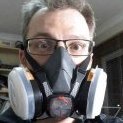
Revell 1:25 Foose Custom Cadillac Eldorado.
BrianI posted a topic in Ready For Inspection - Vehicles
The last bits glued on and the last decals applied an hour before the end of 2023, so I'm calling the Revell 1:25 Foose Custom Cadillac Eldorado done. An interesting build (with several roof repairs!). My first real use of 2K clear gloss coat (which I'm still not convinced about, due to it looking like clear syrup covering the model due to it's thickness). But overall a good build, apart from Revel quality such as a slightly twisted chassis. But at least it's now done and dusted 🙂 IMG_6863-web by Brian Innes, on Flickr IMG_6872-web by Brian Innes, on Flickr IMG_6873-web by Brian Innes, on Flickr IMG_6875-web by Brian Innes, on Flickr IMG_6880-web by Brian Innes, on Flickr IMG_6883-web by Brian Innes, on Flickr IMG_6888-web by Brian Innes, on Flickr IMG_6889-web by Brian Innes, on Flickr IMG_6890-web by Brian Innes, on Flickr -
Seasoned green things Britmodellers 🌟 I recently finished this Revell bubbletop Thunderbolt, Hamilton prop and rocket tubes came from an Academy Razorback. Thanks for watching! Luka
-
My first 262 was the original Airfix one released in 1960. I never thought it looked quite right but it has taken them until 2017 to replace it. After that I built the Frog kit released in the early 1970's, perhaps a scaled down version of the Hasegawa 1/32 kit Frog imported back then. Now I will have a shot at the 1997 Revell version- Looks like it comes with rocket tubes! Pete
- 14 replies
-
- 23
-

-
Hi All, With the Christmas festivities out the way it's time for a new project. Although I do have some odds & ends to sort out on a couple of other builds, I do enjoy starting a large build at this time of year, much like the breadbin-swapping modelling machine that is @AliGauld. At this time last year my employment status (or lack thereof) precluded such an extravagance, so it's nice to be able to kick off another 'heavy'. This time around I've been lucky enough to get my hands on Revell's Halifax B Mk.III, which was kindly transported to these parts by my parents. Now many of you may know that this kit is currently OOP, but the large-scale legend @tomprobert kindly agreed to part with his kit (he likes them bigger these days, he said 🤣). Anyhoo this rather large end-opening box is now in my possession: It's a BIG box! Tom very generously threw in a few extras - a set of Freightdog wheels: And an Eduard interior set, along with a rather obligatory mask set: Now there is a LOT of plastic in that box. Here's the sprues: The transparencies: A rather nice set of decals: The kit allows for 2 marking schemes, an RCAF aircraft 'Oscar' (which seems to be an oft-modelled option), and an RAF aircraft. I've decided to model a 100 Group RAAF aircraft, probably one of these two: (Both images copyright Australian War Memorial - for discussion only and will be removed on request). I am led to understand that the kit is a little deficient in the bomb department, so it might finally be time to add this to the pot: Now that's a festive mix! I might be a little slow getting this going, but it should be a hoot! Thanks for looking, Roger
- 180 replies
-
- 31
-


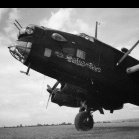

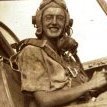
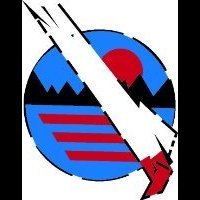

.thumb.jpeg.bd5ac3f3535ac485a9fd8add65279c61.jpeg)
